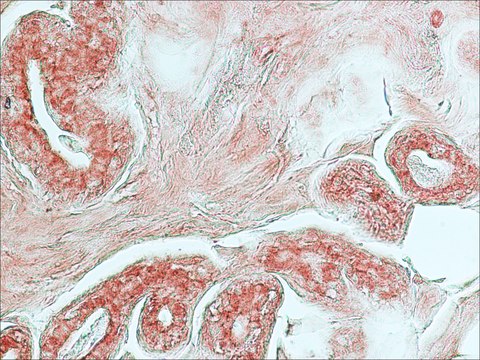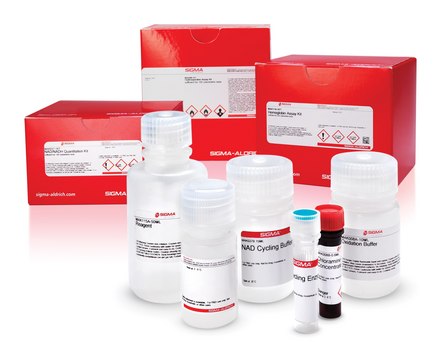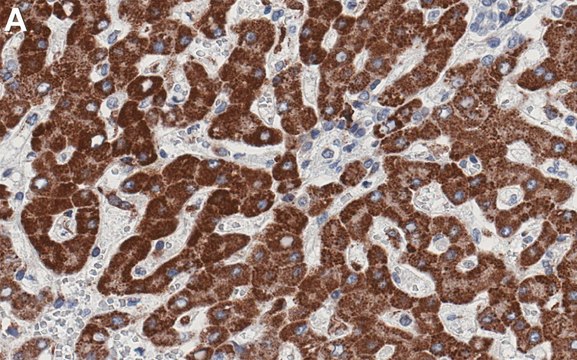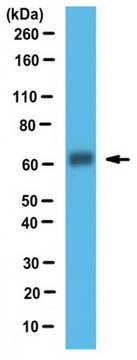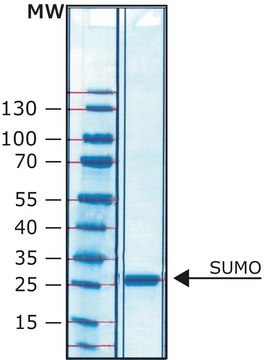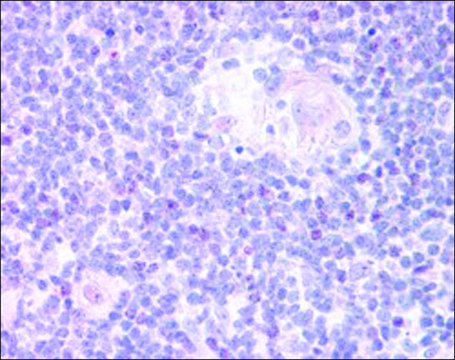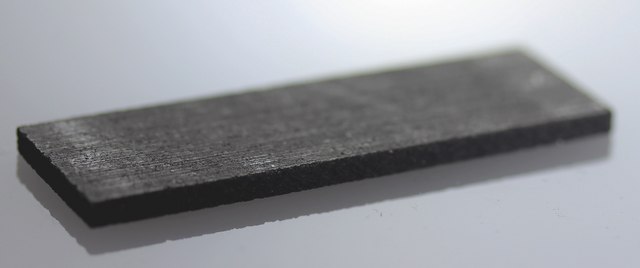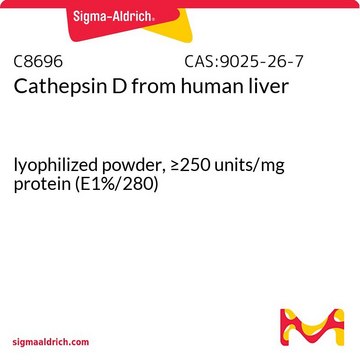CS0800
Cathepsin D Assay Kit
sufficient for 120 assays (100 μL)
Sign Into View Organizational & Contract Pricing
All Photos(1)
About This Item
UNSPSC Code:
12352200
Recommended Products
usage
sufficient for 120 assays (100 μL)
shipped in
dry ice
storage temp.
−20°C
Gene Information
human ... CTSD(1509)
Biochem/physiol Actions
Cathepsin D, a ubiquitous aspartic protease belonging to the A1 peptidase family, is found intracellularly in lysosomes. The enzyme has been associated with various biological processes such as: apoptotic events (e.g., the release of cytochrome c from mitochondria and the loss of the transmembrane potential (ΔΨ), aging, Alzheimer′s disease, and breast cancer.
Features and Benefits
- Contains all the reagents required for the measurement of the cathepsin D activity in cell and tissue lysates.
- The bottom limit of detection is 750 pg of protein (or 13 femtomoles of enzyme).
- A single step reaction with direct, real time observation of the degradation product released by the enzyme.
- The kit has been tested on extracts from CHO, HeLa, HEK 293, A431, HepG2, U937, and Jurkat cells on S. cerevisiae and on rat brain, kidney and liver tissues.
Analysis Note
The assay is based on the hydrolysis, by the enzyme, of an internally quenched fluorimetric substrate.
Kit Components Only
Product No.
Description
- Assay Buffer 1x 20 mL
- Cathepsin D from bovine spleen 5 U
- Albumin Solution 1 mL
- Cathepsin D Substrate Solution .25 mL
- 7-Methoxycoumarin 4-acetic acid Standard Solution .1 mL
- Pepstatin A Inhibitor Solution .6 mL
Signal Word
Danger
Hazard Statements
Precautionary Statements
Hazard Classifications
Aquatic Acute 1 - Aquatic Chronic 1 - Skin Corr. 1B
Storage Class Code
8B - Non-combustible corrosive hazardous materials
Choose from one of the most recent versions:
Already Own This Product?
Find documentation for the products that you have recently purchased in the Document Library.
Ai Ling Wang et al.
PloS one, 4(1), e4160-e4160 (2009-01-09)
Age-related macular degeneration (AMD) is a major cause of loss of central vision in the elderly. The formation of drusen, an extracellular, amorphous deposit of material on Bruch's membrane in the macula of the retina, occurs early in the course
Ai Ling Wang et al.
PloS one, 4(4), e5304-e5304 (2009-04-25)
Age-related Macular Degeneration (AMD) is a major cause of central vision loss in the elderly and smoking is a primary risk factor associated with the prevalence and incidence of AMD. To better understand the cellular and molecular bases for the
Kjetil Elvevold et al.
Hepatology (Baltimore, Md.), 48(6), 2007-2015 (2008-11-26)
Liver sinusoidal endothelial cells (LSECs) are largely responsible for the removal of circulating lysosomal enzymes (LE) via mannose receptor (MR)-mediated endocytosis. We hypothesized that LSECs rely on this uptake to maintain their extraordinarily high degradation capacity for other endocytosed material.
Rabea Asleh et al.
The Journal of biological chemistry, 289(23), 16313-16325 (2014-04-30)
The major function of the Haptoglobin (Hp) protein is to control trafficking of extracorpuscular hemoglobin (Hb) thru the macrophage CD163 receptor with degradation of the Hb in the lysosome. There is a common copy number polymorphism in the Hp gene
Mallika Valapala et al.
Autophagy, 10(3), 480-496 (2014-01-29)
In phagocytic cells, including the retinal pigment epithelium (RPE), acidic compartments of the endolysosomal system are regulators of both phagocytosis and autophagy, thereby helping to maintain cellular homeostasis. The acidification of the endolysosomal system is modulated by a proton pump
Our team of scientists has experience in all areas of research including Life Science, Material Science, Chemical Synthesis, Chromatography, Analytical and many others.
Contact Technical Service